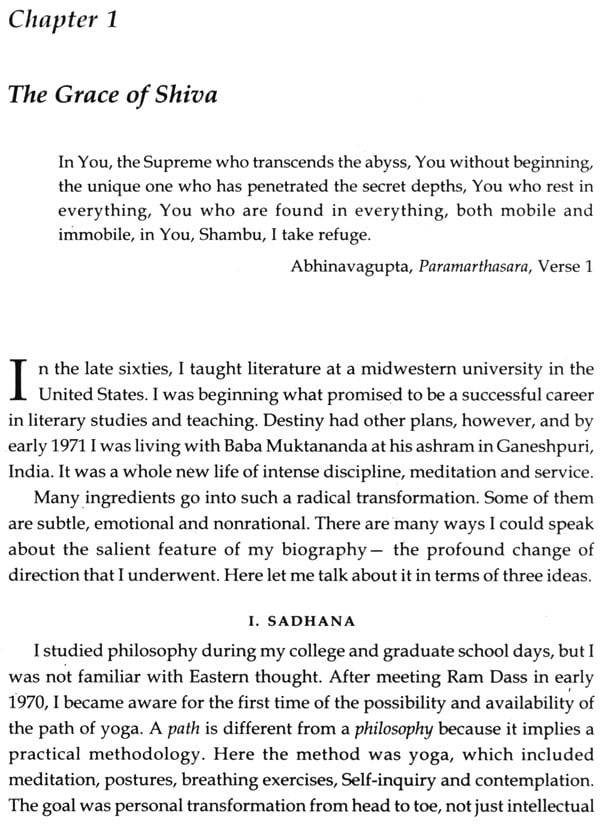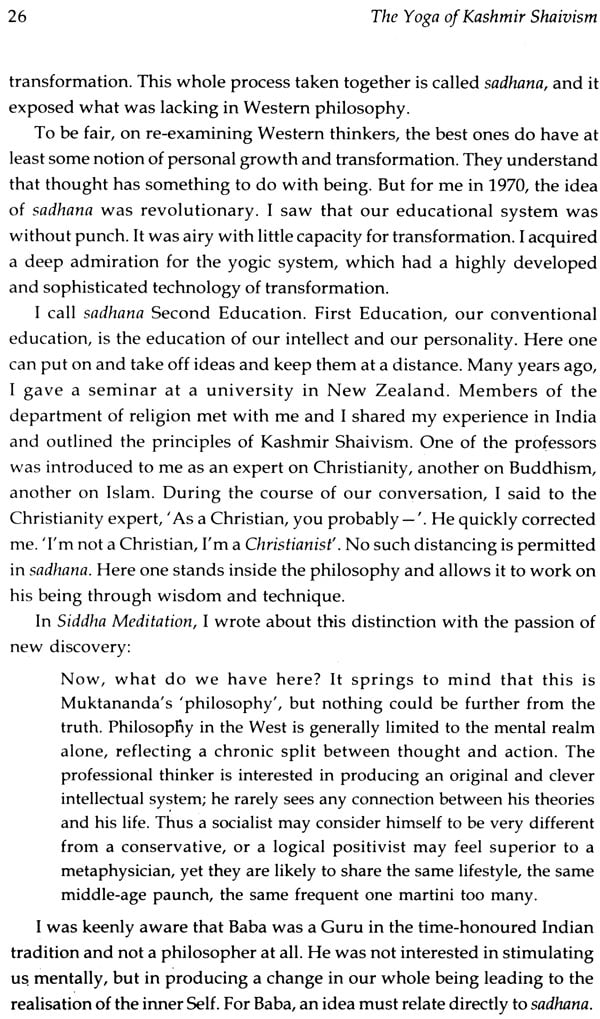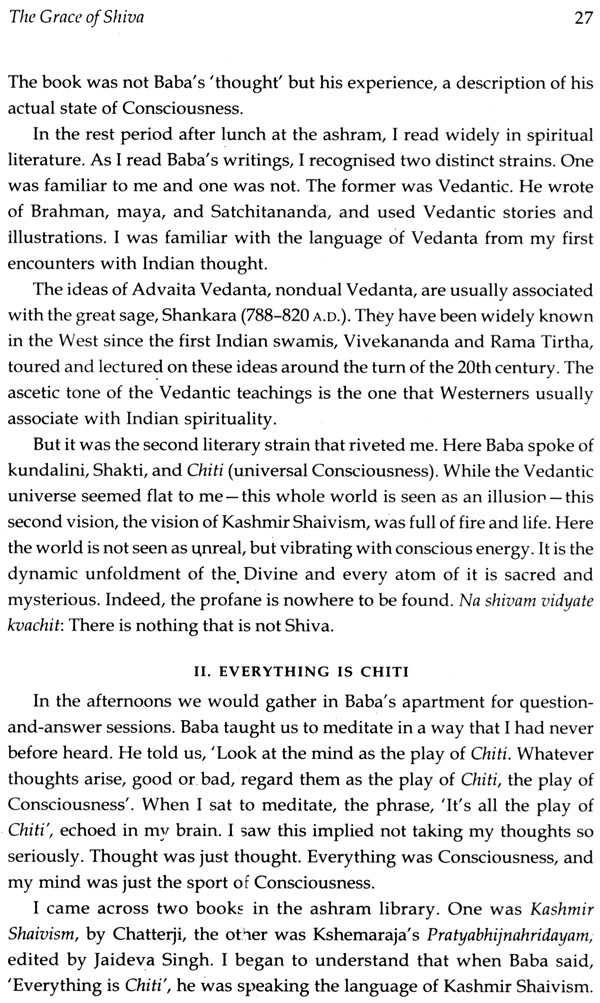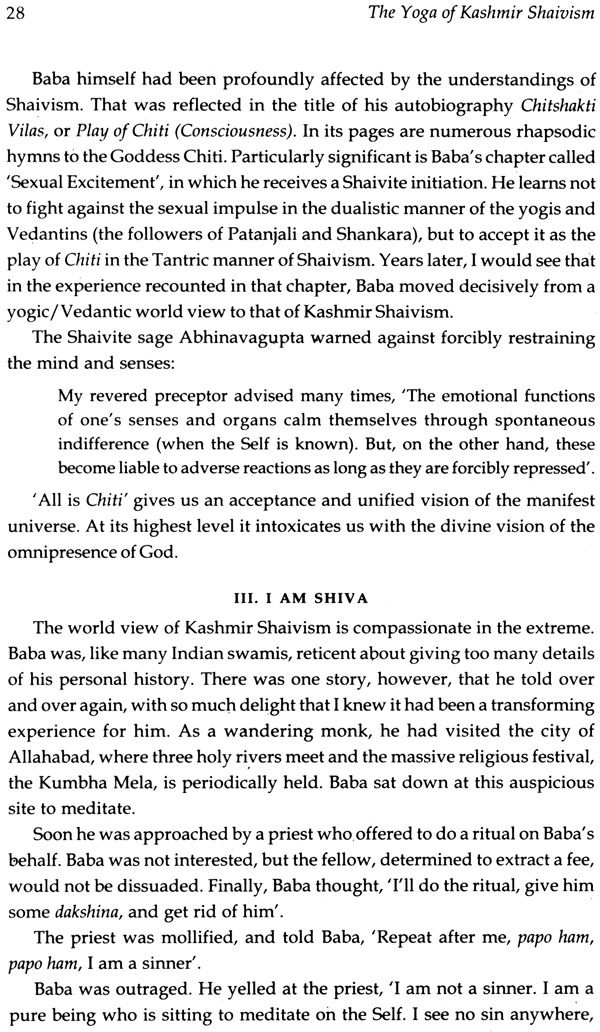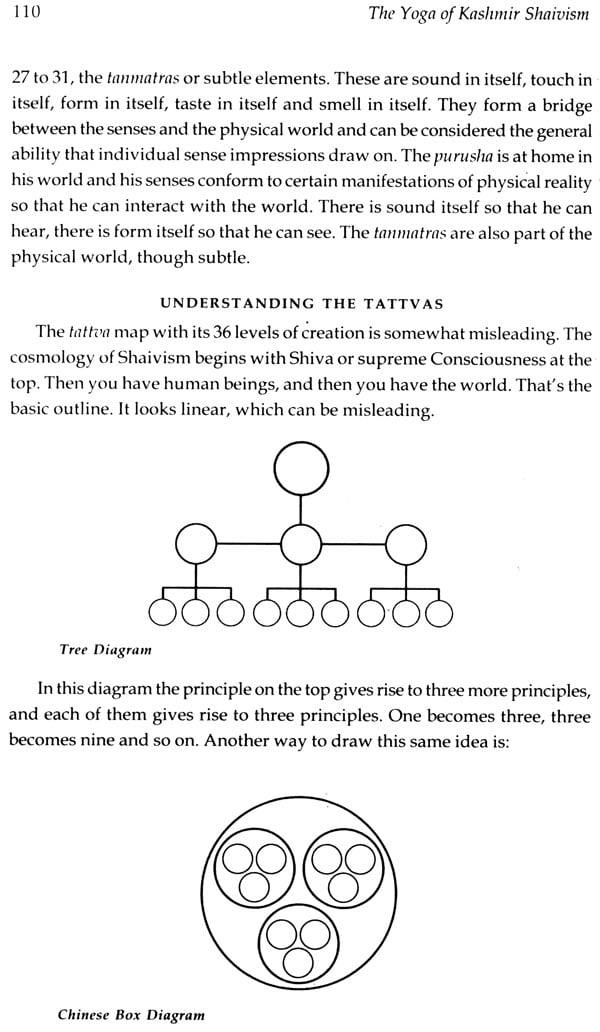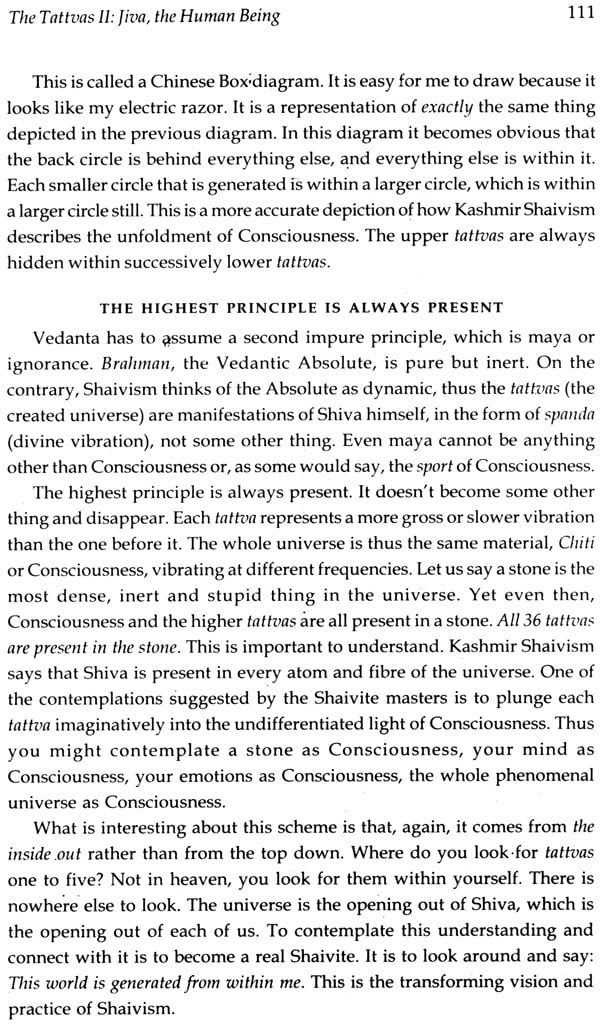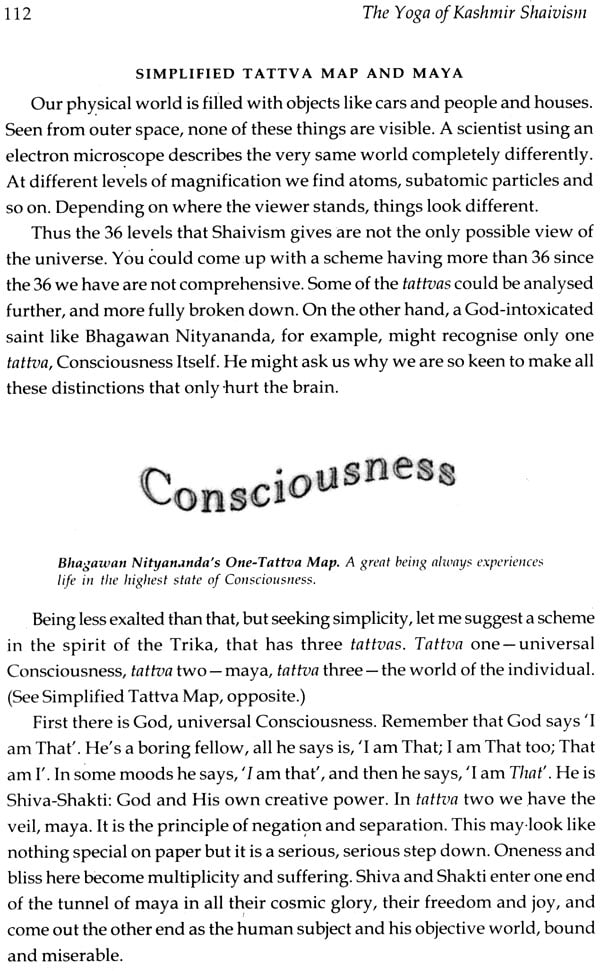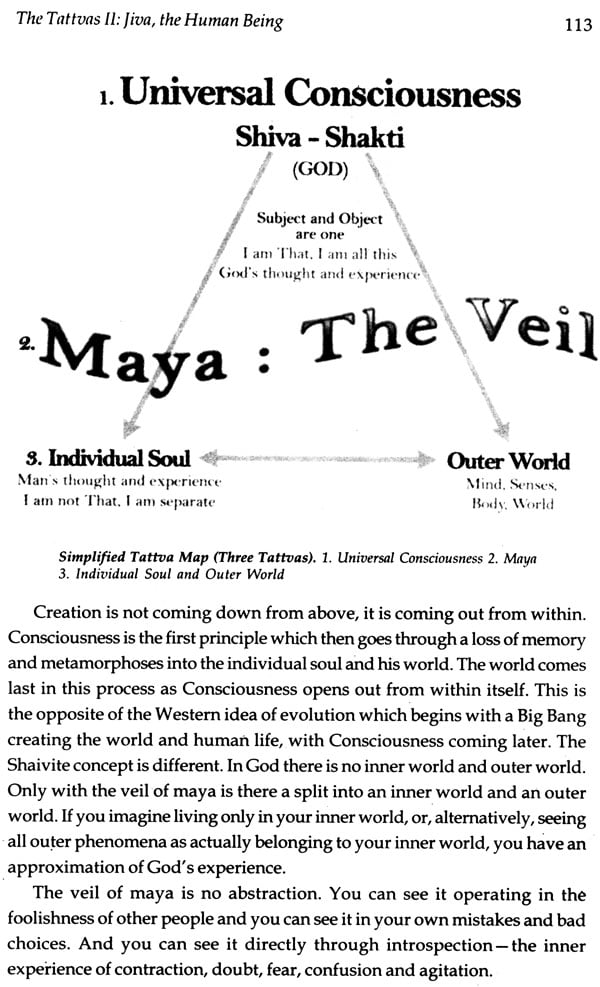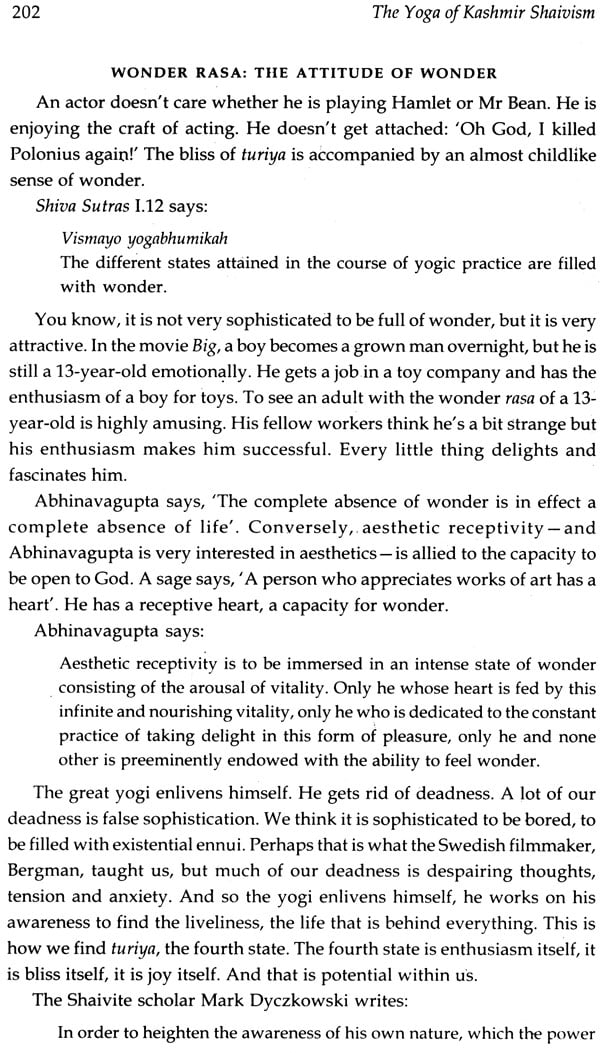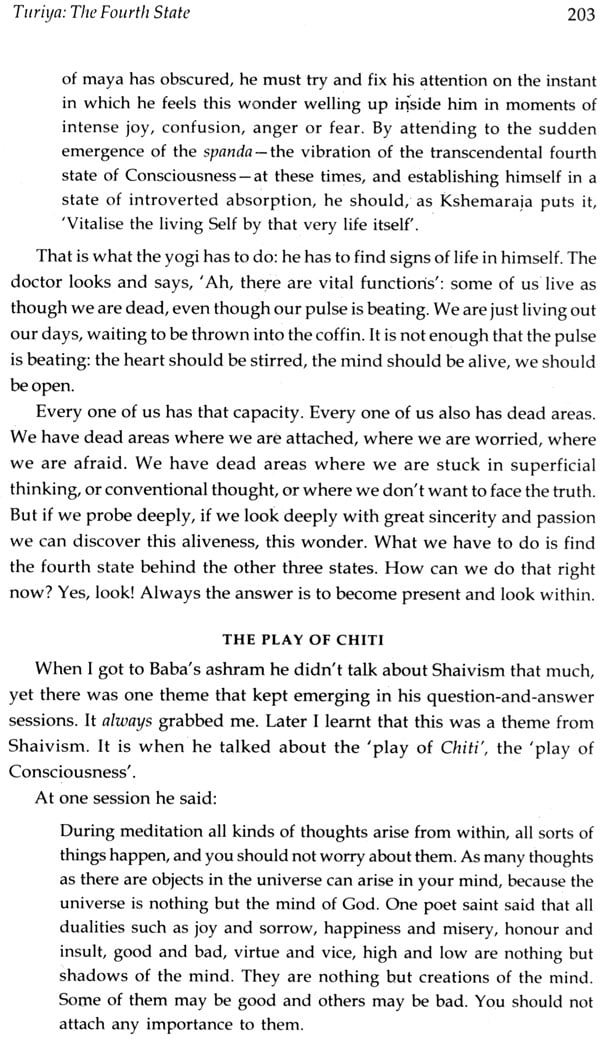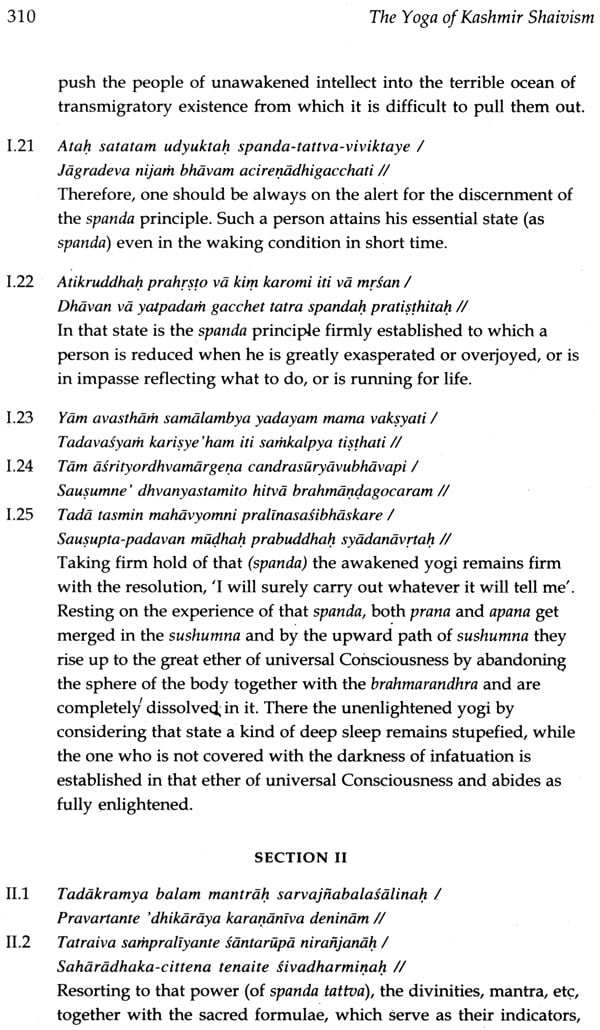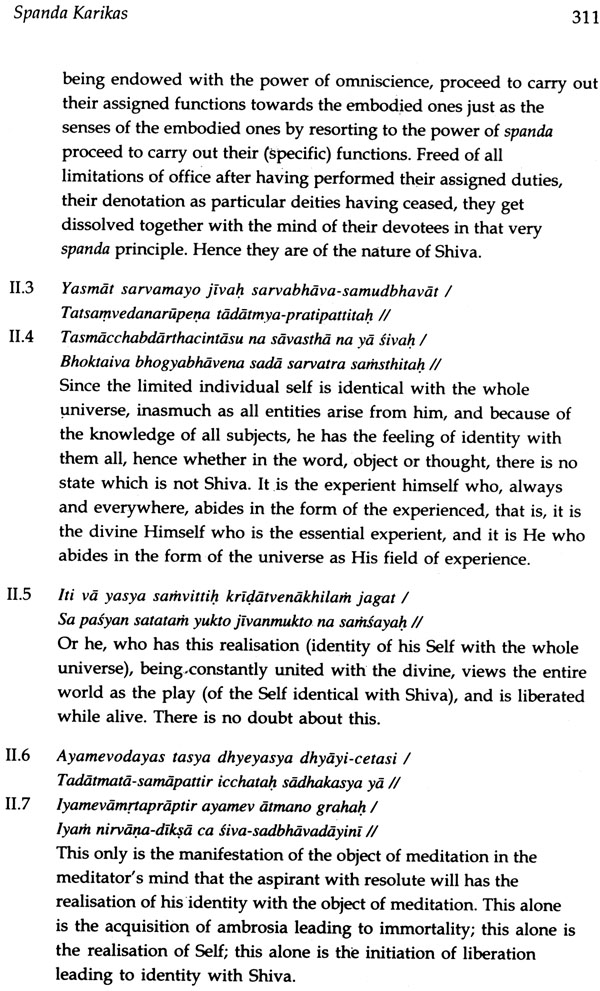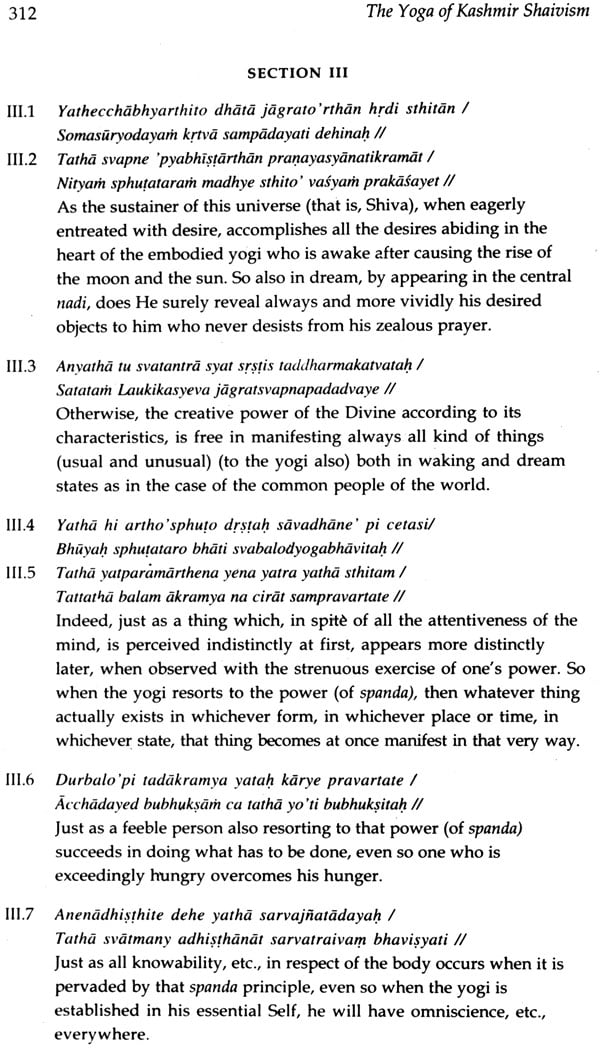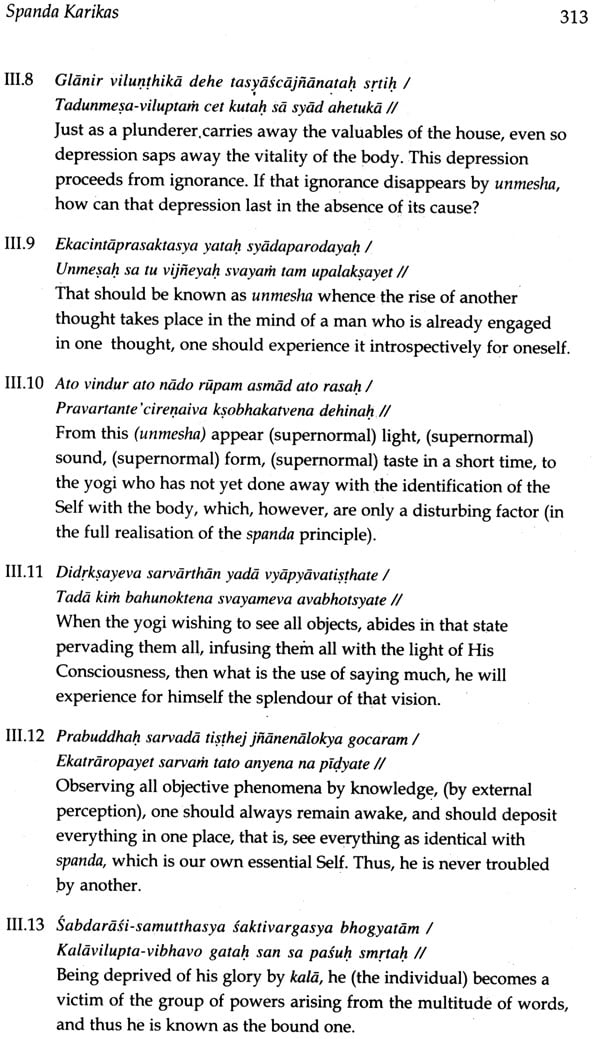
The Yoga of Kashmir Shaivism Consciousness is Everything
Book Specification
| Item Code: | IDF190 |
| Author: | Swami Shankarananda |
| Publisher: | Motilal Banarsidass Publishers Pvt. Ltd. |
| Language: | English |
| Edition: | 2016 |
| ISBN: | 9788120826991 |
| Pages: | 350 (Illustrated With B & W Figures) |
| Cover: | Hardcover |
| Other Details | 9.0 inch X 6.0 inch |
| Weight | 570 gm |
Book Description
From the Jacket:
Consciousness is the most intimate experience of life, the essence of life itself. Among the many spiritual traditions born and developed in India, one ancient philosophy - Kashmir Shaivism - has explored it completely.
Until now, Kashmir Shaivism was an esoteric field accessible only to a few scholars and other specialist. Here, for the first time, Swami Shankarananda, a self-realised spiritual master, presents the wisdom of this powerful tradition in a form that will delight and inspire all spiritual seekers. He explores the teachings in rich detail, elucidating ideas and meditative practices while drawing upon a vast canvas of many great beings, wisdom tradition and personal experience.
The Yoga of Kashmir Shaivism is a book that will transform you. It is a resource and guide towards investigating and deepening your own Consciousness.
About the Author:
Swami Shankarananda (Swamiji) grew up in Brooklyn, New York, and as a graduate of both Columbia and New York Universities, began a promising career in English Literature at Indiana University. However, in the late sixties, a dramatic turn of events profoundly altered the direction of his life.
In 1970, he traveled to India in search of a great teacher and a spiritual path. His search culminated in the meeting of the powerful and charismatic Baba Muktananda, under whom he studied for 12 years until Muktananda's death.
Swamiji is author of the Australian best-seller, Happy for No Good Reason, also published in India by Motilal Banarsidass. Other titles by Swamiji include a five-CD lectures series, The Yoga of Gurdjieff, and the audio and video series, Great Beings, including Volume I: The Wisdom of Anandmayi Ma.
| Introduction: Conclusion Itself | 15 |
| Study of Consciousness / Trika Hridayam: The Heart of the Teaching Kashmir Shaivism or Shaivism in the Vernacular / About this Book | |
| Chapter 1: The Grace of Shiva | 25 |
| I: Sadhana / II: Everything Is Chiti / III: I Am Shiva / Self-Recognition / Lord Shiva / The Divine Shakti / The Shape of Shaivism / Shaiva Mandalas | |
| Chapter 2: The Origins of Kashmir Shaivism | 41 |
| Two Approaches: Vedic and Tantric / Kula and Krama Schools / The Origins of Kashmir Shaivism / The Trika / Two Contemporary Traditions / I: The Scholary Tradition / II: The Shaktipat Tradition / Scholar and Yogi / Reading Shaivism in English | |
| Chapter 3: A Shaivite Overview | 53 |
| Kashmir Shaivism and the Modern World / The Humanism of Kashmir Shaivism / Arguing with Vedanta / Yogi and Bhakta: Totapuri and Sri Ramakrishna | |
| Chapter 4: Self-Realisation | 61 |
| Enlightened Beings / The Goal: Self-Realisation / Gurdjieff's Seven Men / There Is Nothing That Is Not Shiva / Contemplating Bondage / The Sacred Triangle / A Siddha's Vision / Meditation: The Power of Consciousness | |
| Chapter 5: Yoga are Your Awareness | 75 |
| Consciousness / The Cause of Universe is Consciousness / I Am Subject of My Universe / Awareness Is the Highest Good / Headless Shiva: First Personism / Meditation I: Headlessness / Meditation II: Contemplate Your Awareness | |
| Chapter 6: The Contraction of Consciousness | 87 |
| I Am the Subject / Becoming the Mind / Becoming Shiva Again / Meditation I: Chaitanyamatma / Meditation II: Chiti | |
| Chapter 7: The Tattvas I: Shiva, the Divine Being | 95 |
| The Vision of Shaivism / The Tattvas and the Great Chain of Being / The Tattvas / Tattvas One to Five: The Divine Experience / Language and the First Five Tattvas / The Five Shaktis of Shiva / Tattva Six: Maya: / Tattva Seven to 11: The Kanchukas | |
| Chapter 8: The Tattvas II: Jiva, the Human Being | 107 |
| Tattvas 12 and 13: Purasha and Prakriti - The Rocks and the Sand / The Lower Tattvas - Tattvas 14 to 36: Mind, Senses, Body, World / Understanding the Tattvas / The Highest Principle Is Always Present / Simplified Tattva Map and Maya / Meditation: Layabhavana, Resolving Gross Into Subtle | |
| Chapter 9: Shaivite Yoga: The Three Malas and the Three Upayas | 117 |
| Review / Mala / Upaya / Karma Mala and Anavopaya / Mayiya Mala nad Shaktopaya / Anava Mala and Shambhavopaya / Anupaya: The Methodless Method / Highest First | |
| Chapter 10: Malas and Upayas: Further Thoughts and Contemplations | 128 |
| Review / Inquiry / Thew Malas as A-Statements / The Malas and the Kanchukas / Meditation I: The Malas / The Upayas as B- and G- Statements / Malas, Upayas and Self-Inquiry / Meditation II: The Knot in the Heart / Shaktipat in the Upayas / Samavesha / A Summary of Malas and Upayas / The Upayas as Prespectives / A Caveat / Meditation III: I Am Pure Consciousness' / Meditation IV: Towards Oneness | |
| Chapter 11: The Five Processes and the Yoga Self-Inquiry: | 140 |
| The Five Processes / Meditation on the Five Processes / The Esoteric Five Processes and Shaivite Self-Inquiry / Burning It to Sameness: Hathapaka and Alamgrasa / Shiva Vyapti: Realisation in Shaivism / Meditation on the Esoteric Five Processes: Daily Review | |
| Chapter 12: The Divine Narrator | 154 |
| Overcoming Limitations / The Doctrine of Recognition / The Narrator / Keys Words in the Prathyabhijnahridayam / The Plot of the Prathyabhijnahridayam / The Turn / The Goal / Meditation on Your Shiva Nature | |
| Chapter 13: Methods of Meditation I: Pratyabhijnahridayam Sutra 18 | 169 |
| The Drama of Consciousness / Vikalpa-Kshaya: The Dissolution of Thought Forms / Meditation I: Vikalpa-Kshaya / Sankocha of Shakti / Mediation II: Sankocha of Shakti / Vikasa of Shakti / Meditation III: Vikasa of Shakti / Krama Mudra / Meditation IV: Krama Mudra / Vaha-Cheda / Adyanta-Koti Nibhalana : Hamsa Technique / Meditation V: The Space Between the Breaths / The Breath of the Three Rivers / Mediation VI: The Breath of the Three Rivers | |
| Chapter 14: Shaiva Tantra: The Yoga of the Upward Shift | 184 |
| Unmesha / Upward Shift of Yoga / Doubt and Conviction / Meditation on the Bliss of the World | |
| Chapter 15: Methods of Meditation II: The Vijnanabhairava | 189 |
| Dharnas / Essential G-Statements: Dharanas 73, 74 and 75 / Shiva Is Everywhere: Dharana 91 / The Essence of Tantra: Dharana 93 / One-World G-Statements: Dharana 107 / Equanimity: Dharanas 100 and 101 | |
| Chapter 16: Turiya: The Fourth Stage | 196 |
| Matter and Consciousness / The State of Consciousness / Mediation I: The Fourth State / Living in Awareness / Wonder Rasa: The Attitude of Wonder / The Play of Chiti / Meditation II: The Dance of The Mind | |
| Chapter 17: The Rasas: Abhinavagupta, Art and Spirituality | 206 |
| Aesthetics and Abhinavagupta / The Rasas / Disgust / Shanta Rasa / The Audience / Meditation on the Rasa of the Divine | |
| Chapter 18: Language Mysticism in Shaivism I: Matrika | 220 |
| The Vision of Consciousness / Language, Bondage and Liberation / Four Levels of Speech / Meditaion I: The Levels of Speech / Matrika / Meditation II: Matrika | |
| Chapter 19: Language Mysticism in Shaivism II: Self-Inquiry | 231 |
| Self-Inquiry / The Kula-Chakra Group Ritual / Shiva Process Self-Inquiry Group / Shaivism and Emotion / Relationship Between Thought and Feeling / Group Practice / Contemplation: Doing Self-Inquiry / The Art of Yogic Thinking / Thinking It Through' Meditation | |
| Chapter 20: Language Mysticism in Shaivism III: Mantra | 246 |
| The Power of Mantra / Chaitanya Mantra / The Mind Is Mantra / Meditation: Om Namah Shivaya | |
| Chapter 21: Being Present: Deconstructing Time and Space | 253 |
| Being Where You Are / Meditation I: Being Present / Shiva Process and Layabhavana / Deconstructing Time / Meditation II: Subtle Language / Deconstructing Space / Meditation III: A Variety of Possibilities / An Important Hint for the Meditator | |
| Chapter 22: Shakti Chakra: The Collective Whole of Energies | 265 |
| Lord of the Shaktis / Shiva Asana / The Shaktis / Meditations on the Shakti Chakra | |
| Chapter 23: Anupaya | 274 |
| The Fourth Upaya / The Natural State / Bondage and Liberation / Living in Satsang / Shaktipat / Meditation: Divine Acceptance | |
| Chapter 24: Love | 285 |
| First Person, Second Person, Third Person, / Douglas Harding and First Personism / Matrin Buber and I-Thou / Kashmir Shaivism and Devotion / Heart-to-Heart Meditation | |
| Chapter 25: Conclusion: The Living Spirit of Shaivism | 290 |
| Approaching the Truth / Inquiry / Shaivism as the Path of the Heart / May There Be Welfare for All! | |
| Appendix A: Shiva Sutras | 297 |
| Appendix B: Pratyabhijnahridayam | 304 |
| Appendix C: Spanda Karikas | 307 |
| Appendix D: G-Statements | 316 |
| Selected Notes | 317 |
| Selected Bibliography | 323 |
| Glossary | 325 |
| Index | 334 |
